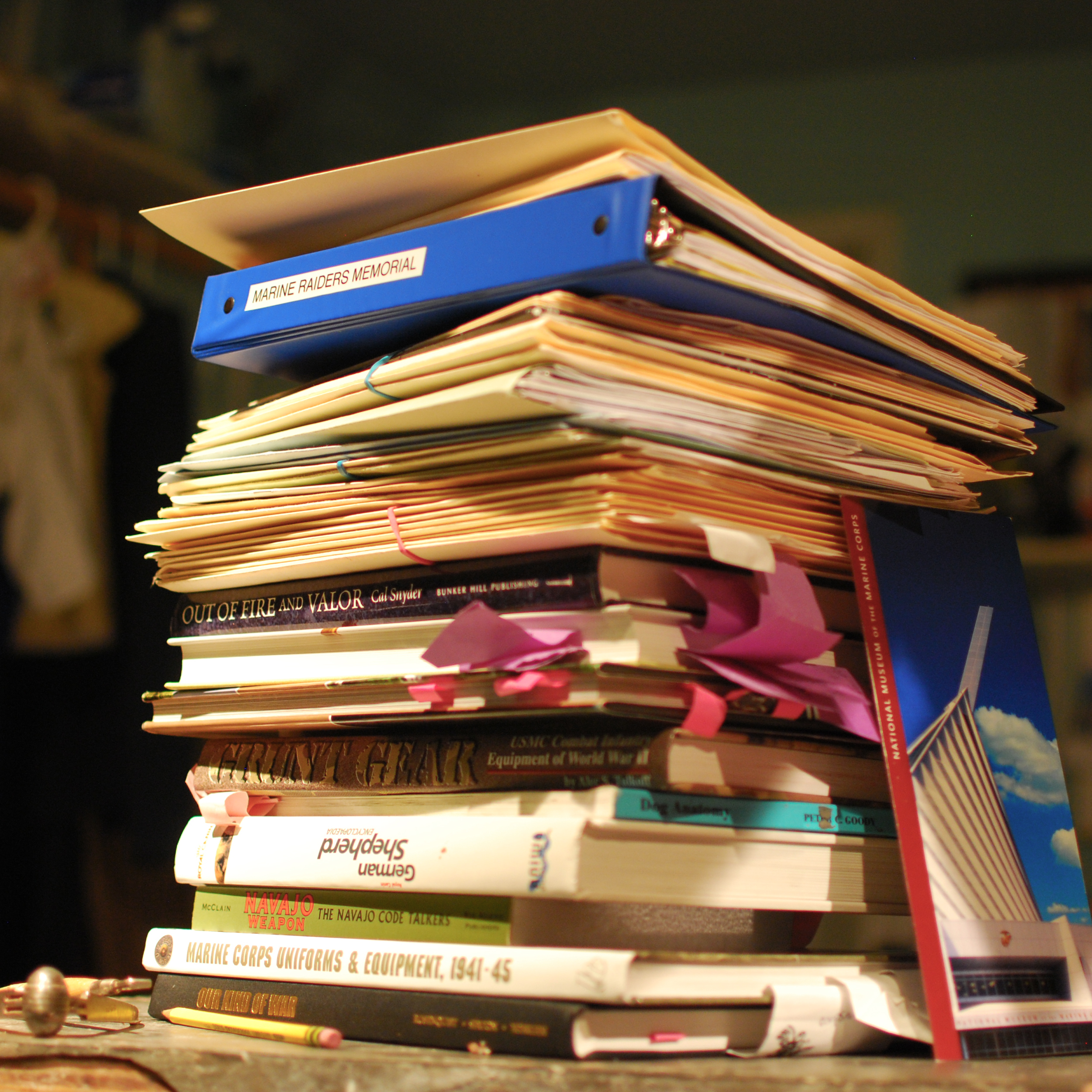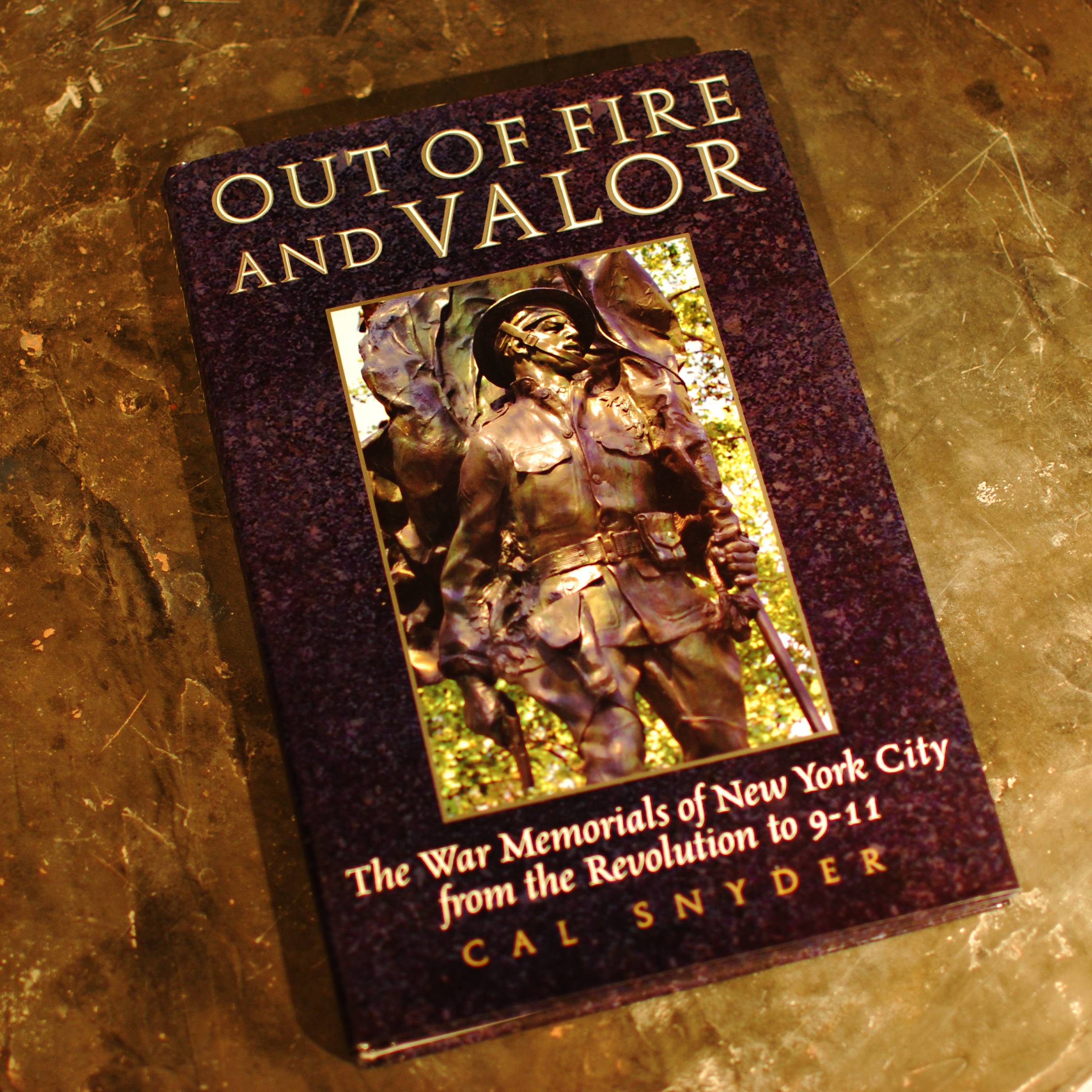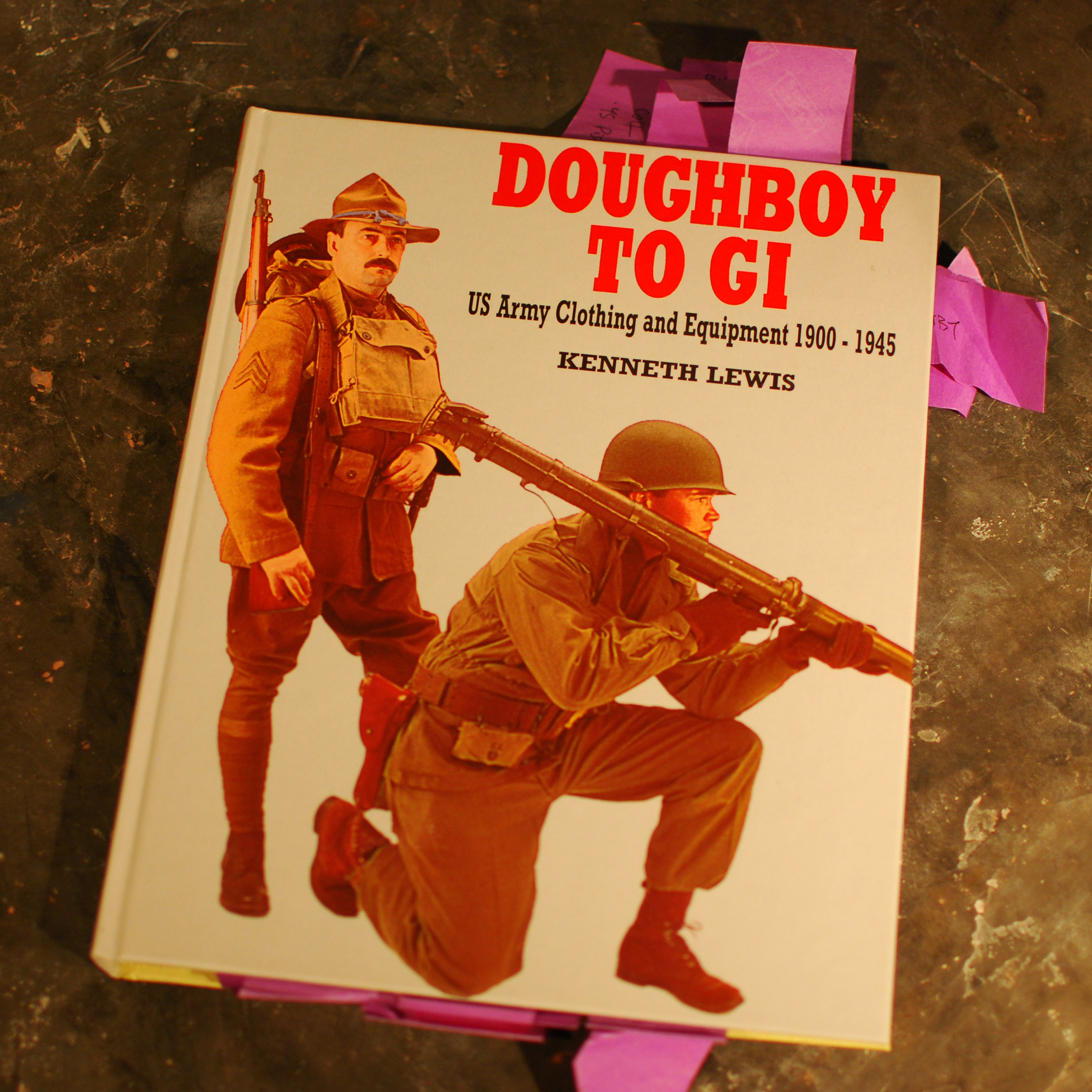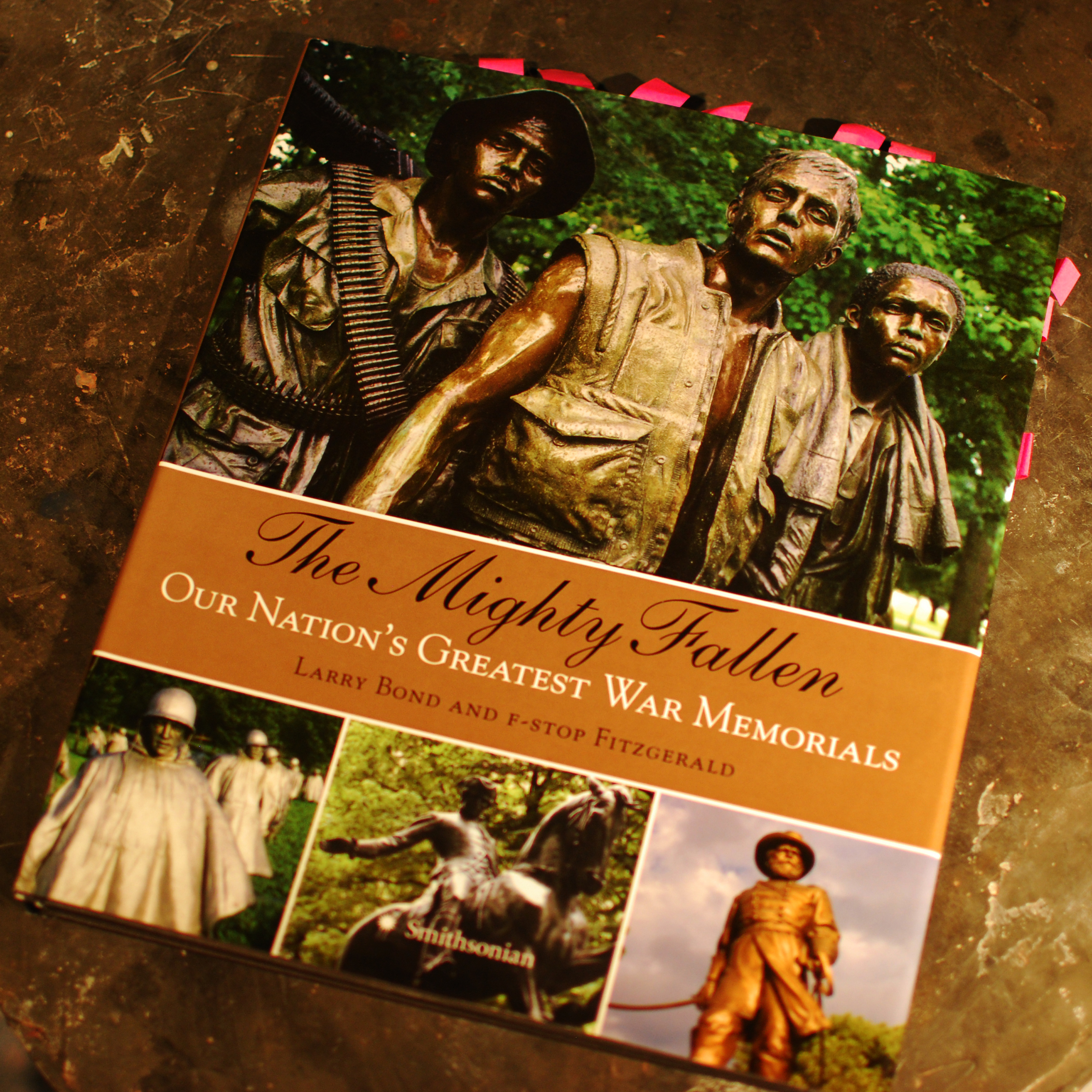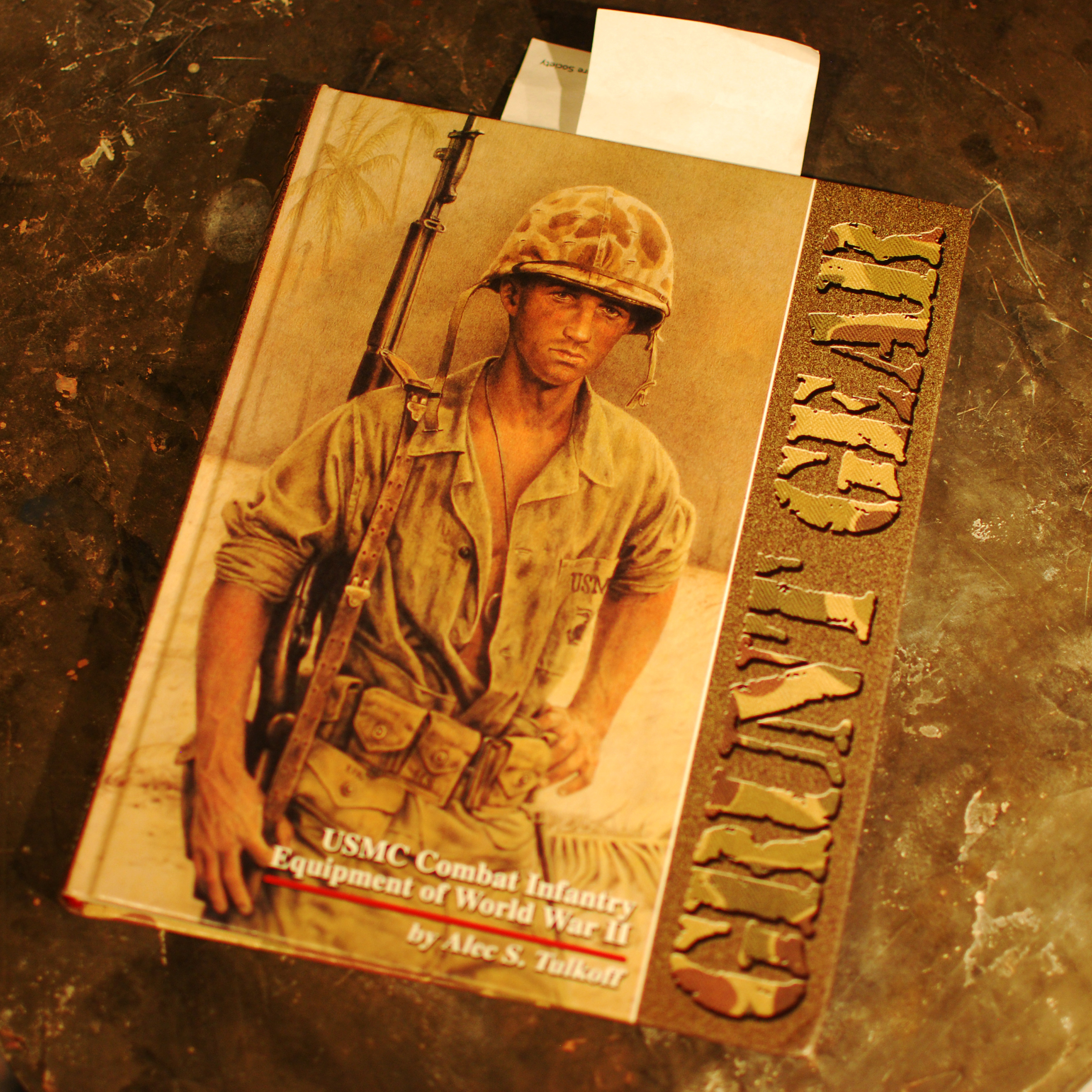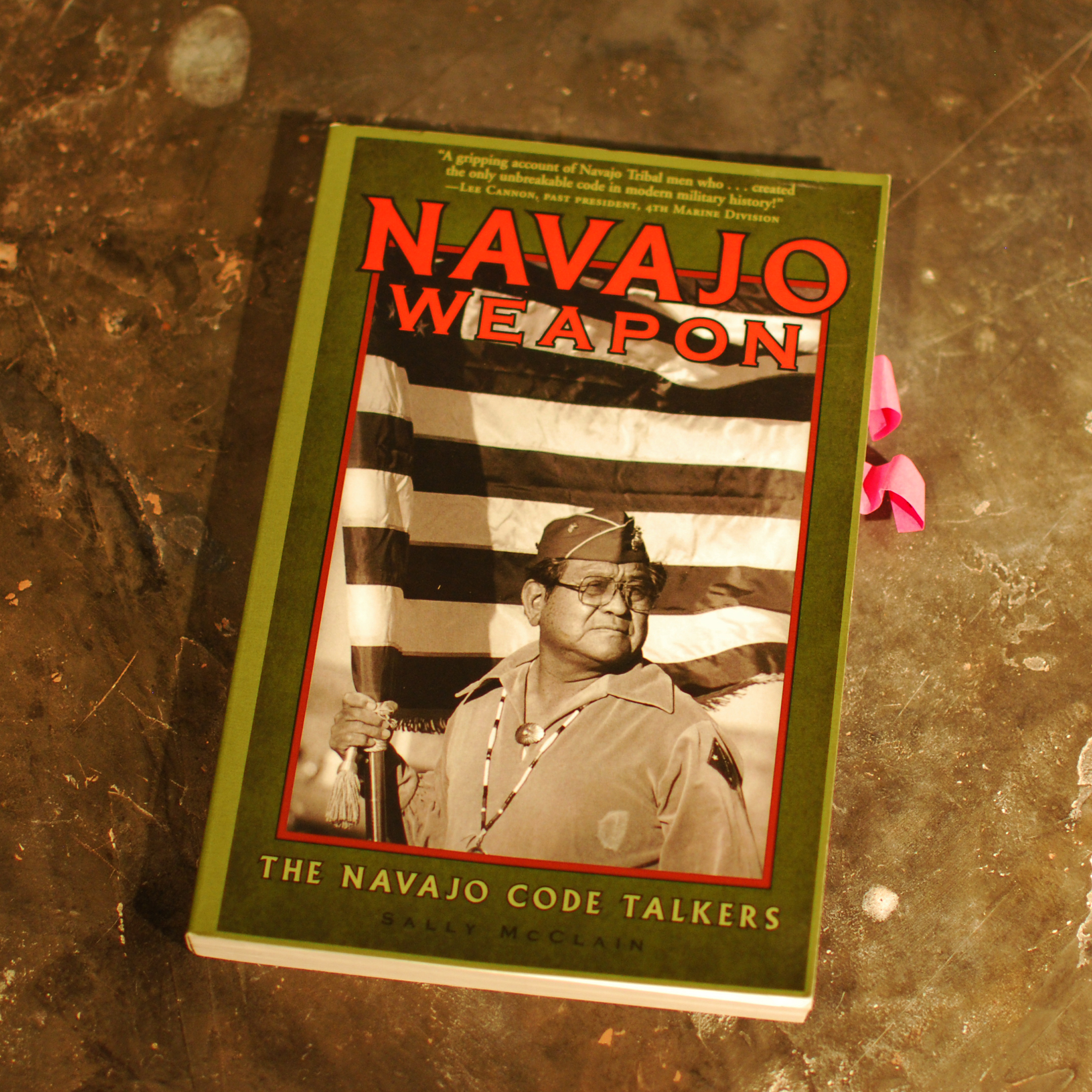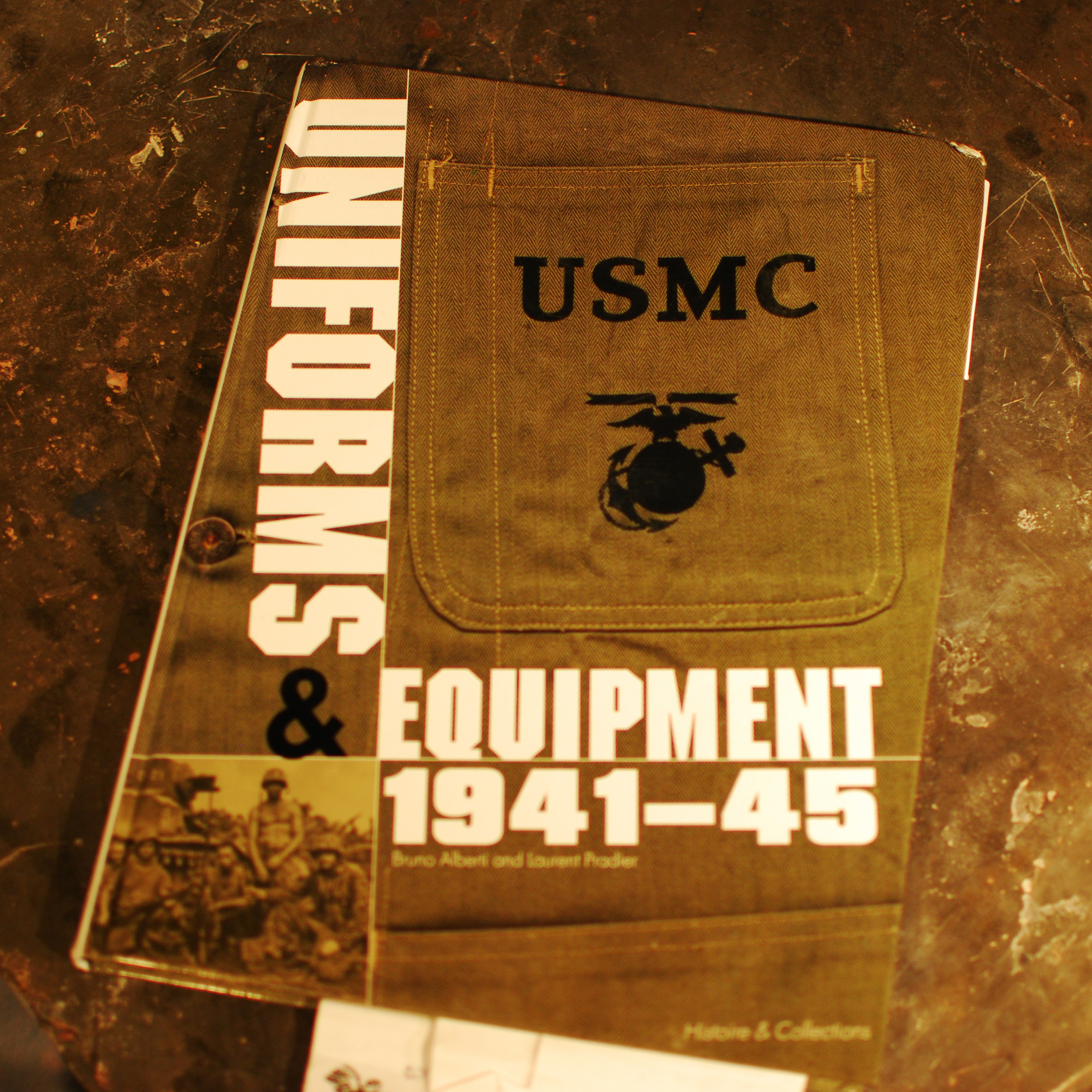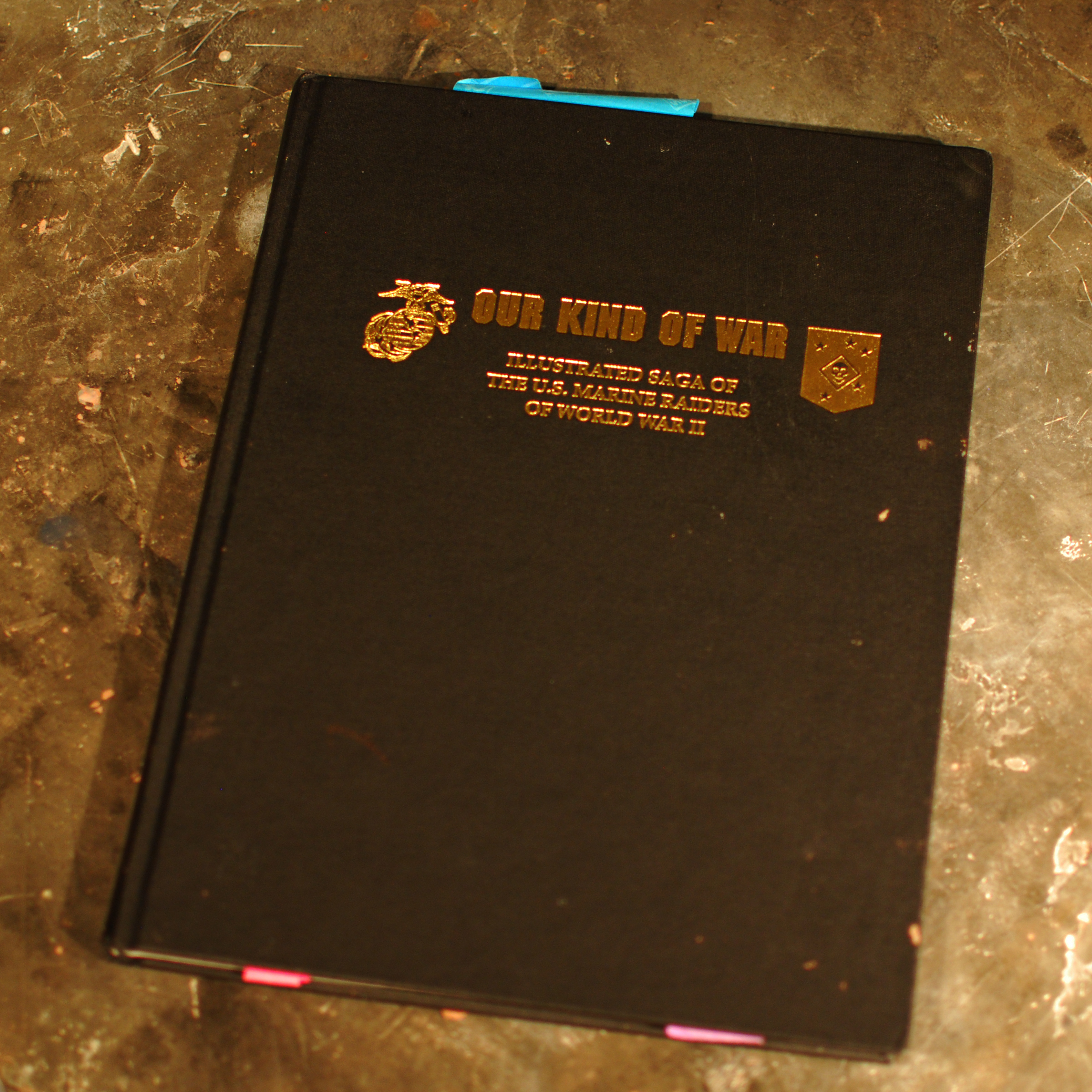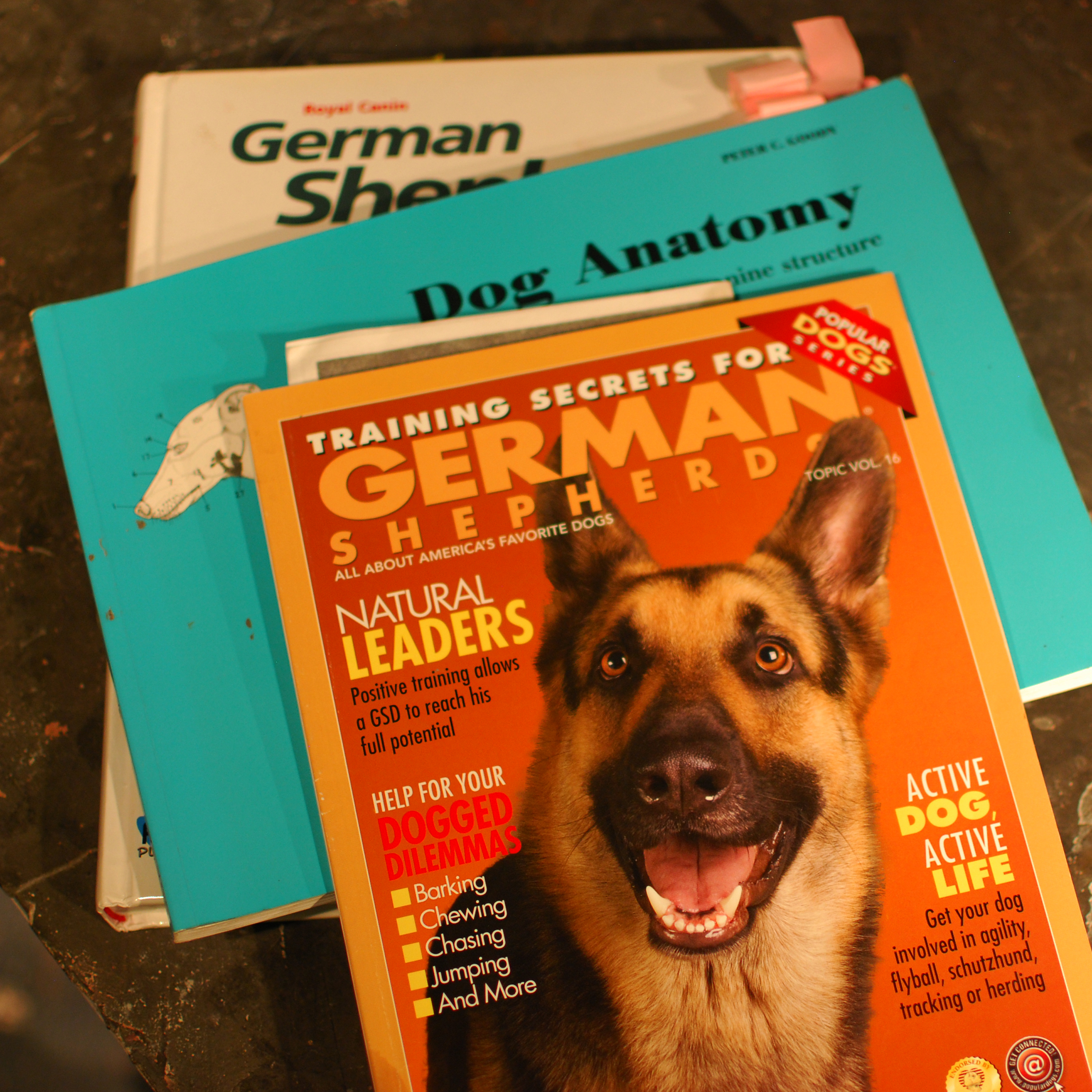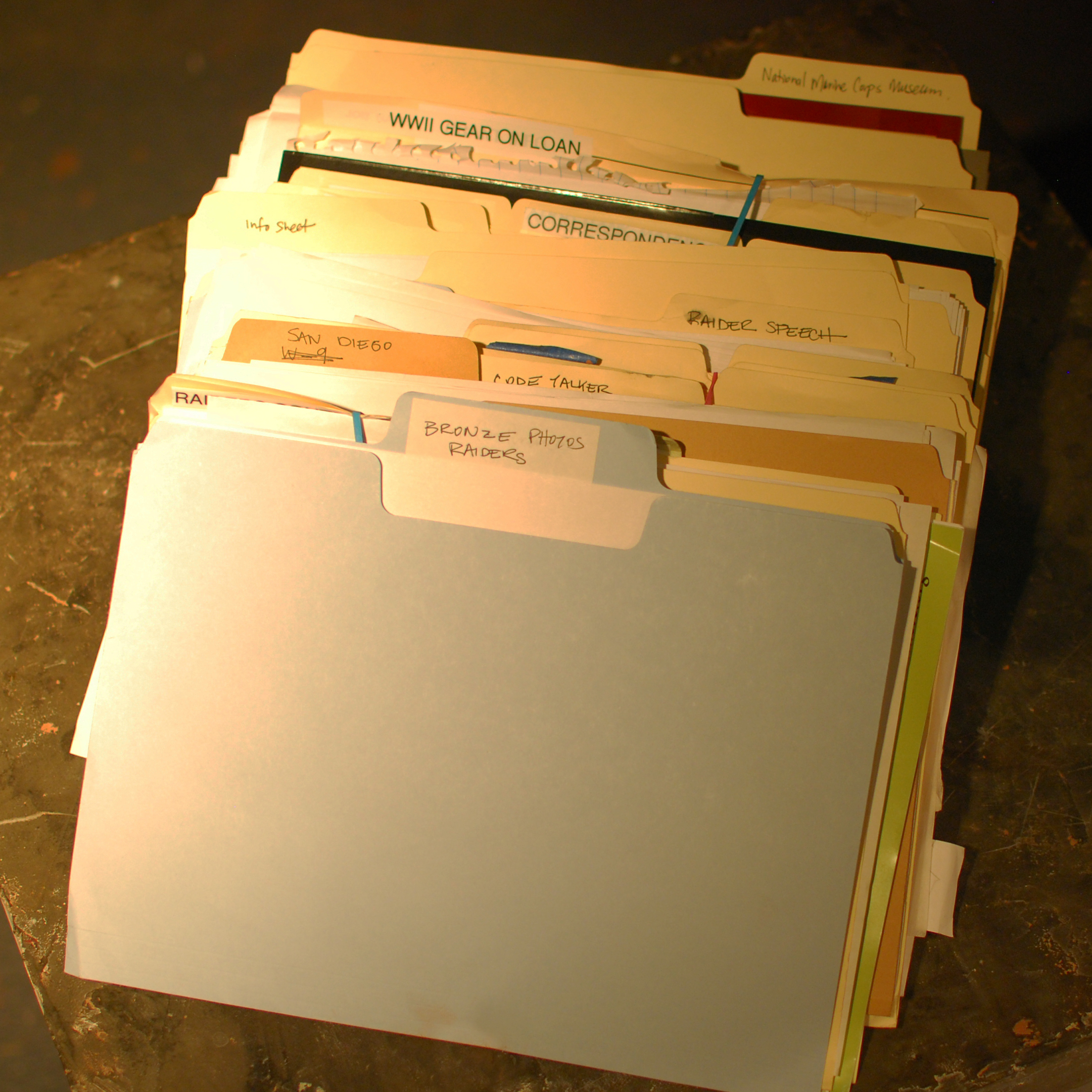Journal of the Portrait Society of America, Volume XXVI, Issue 104
The Colonel John W. Thomason, Jr. Award
Triangle, VA – Our military is not generally seen as being a proponent of the arts, but the 35 year-old Marine Corps Heritage Foundation recognizes it as a powerful way to preserve and promote Marine Corps history. This year, the foundation hosted over 400 ranking officials and special guests at its annual awards recognizing artworks that embody this goal. One of the highlights of the night was the presentation of the Colonel John W. Thomason, Jr. Award to professional artist Mardie Rees for her sculpture 'Soul of the Forward and Faithful.' The award is given each year to an individual artist for a distinguished work depicting some aspect of Marine Corps life. The nod also marks the third award Rees’ Marine sculpture has garnered.
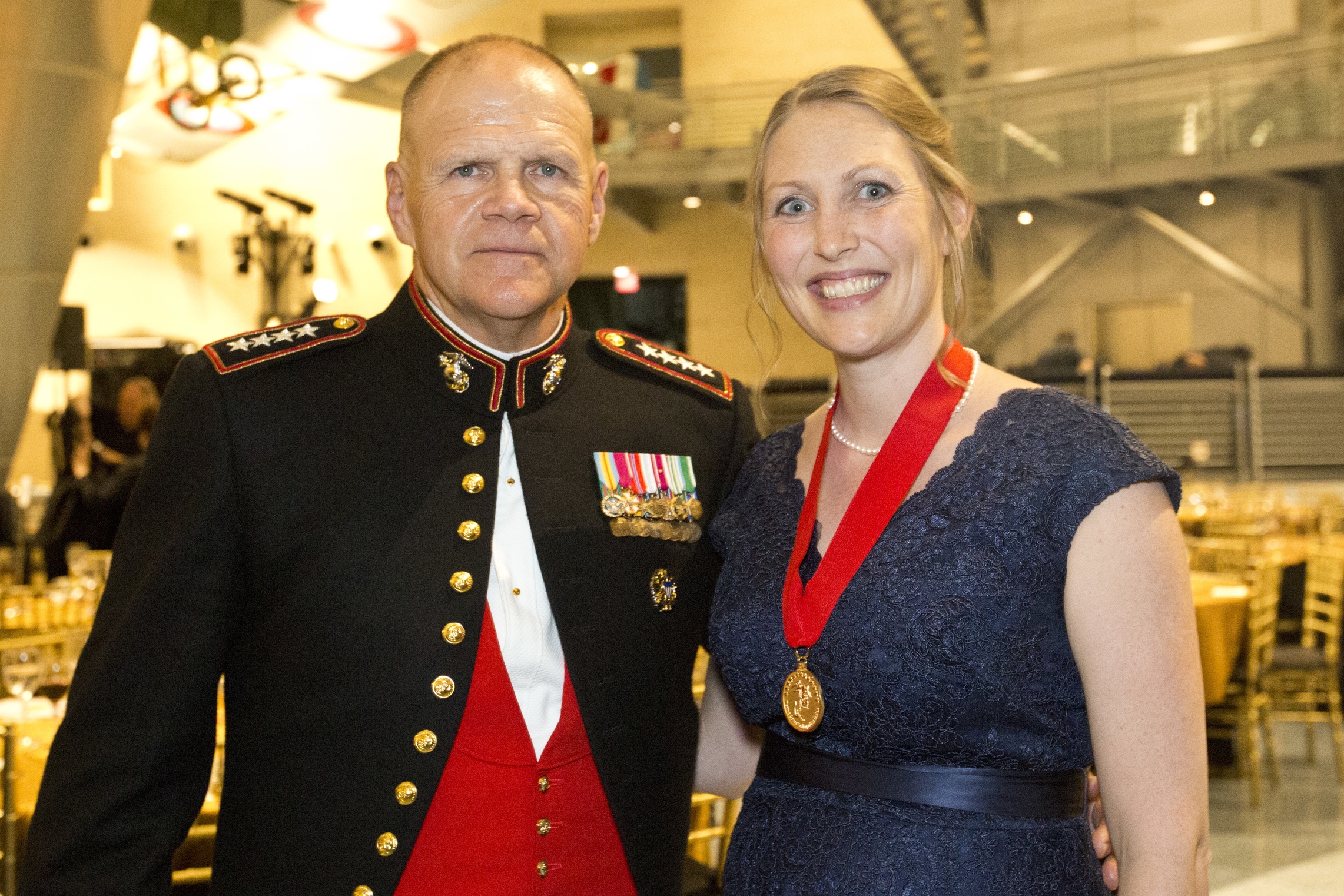
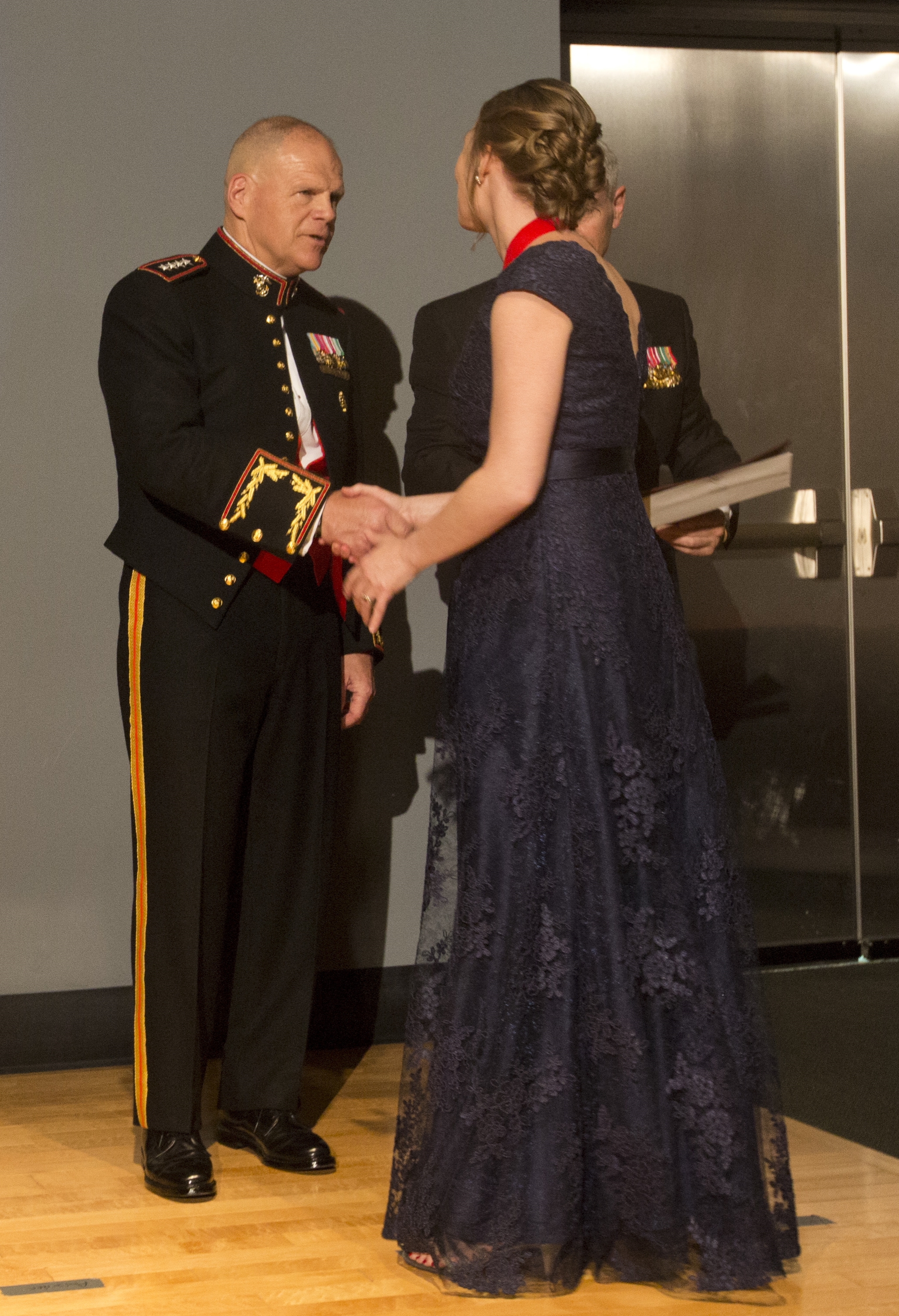
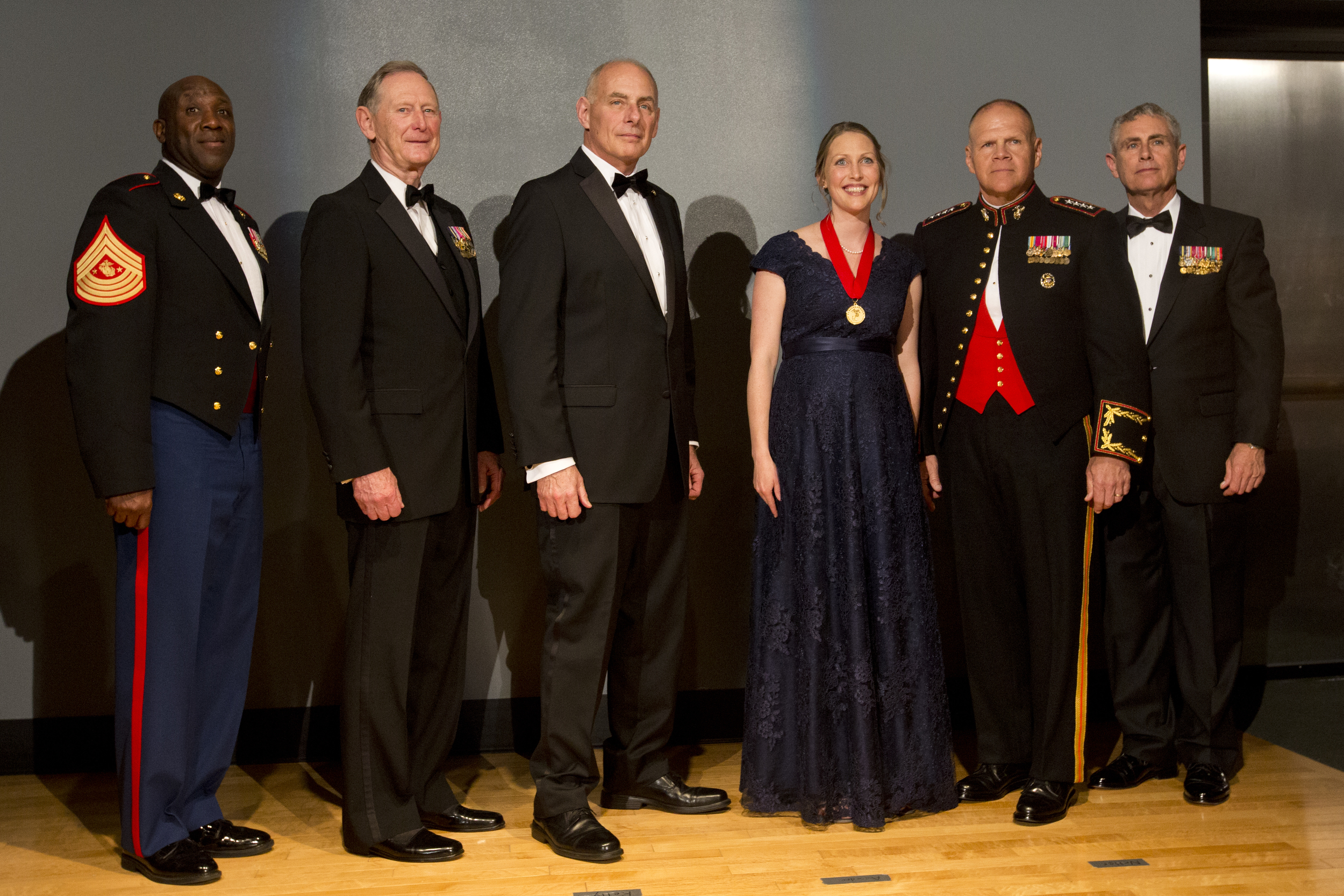
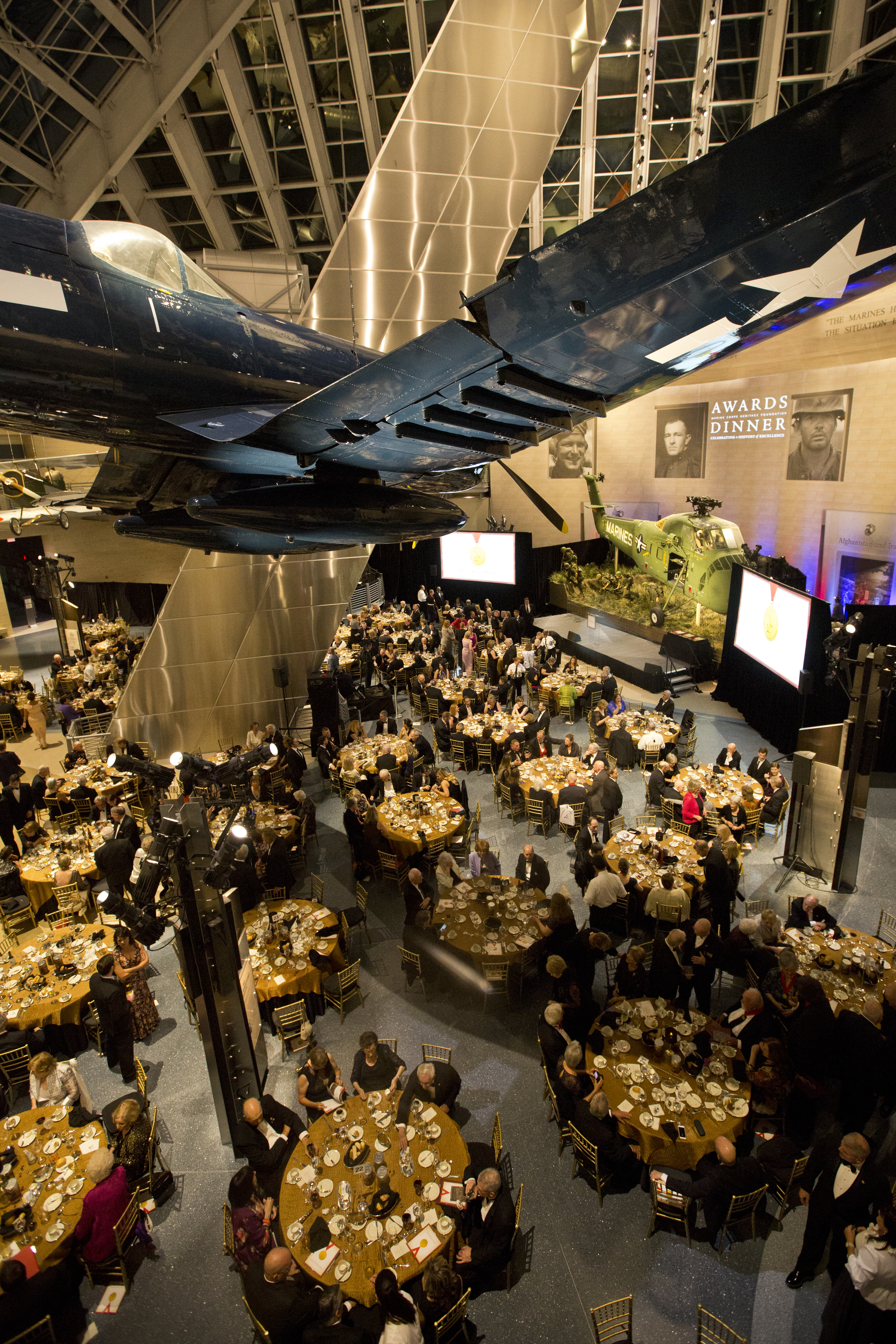
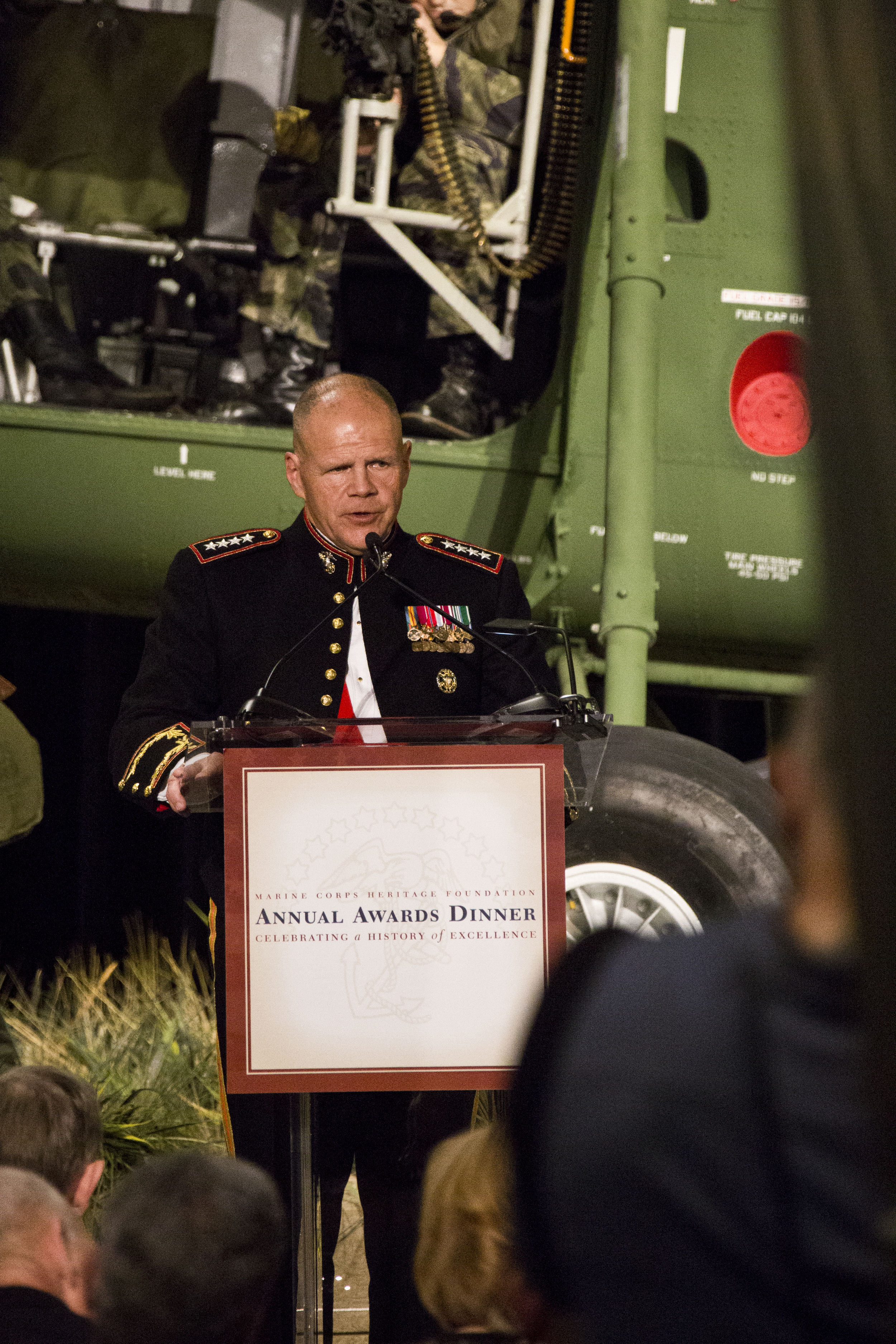
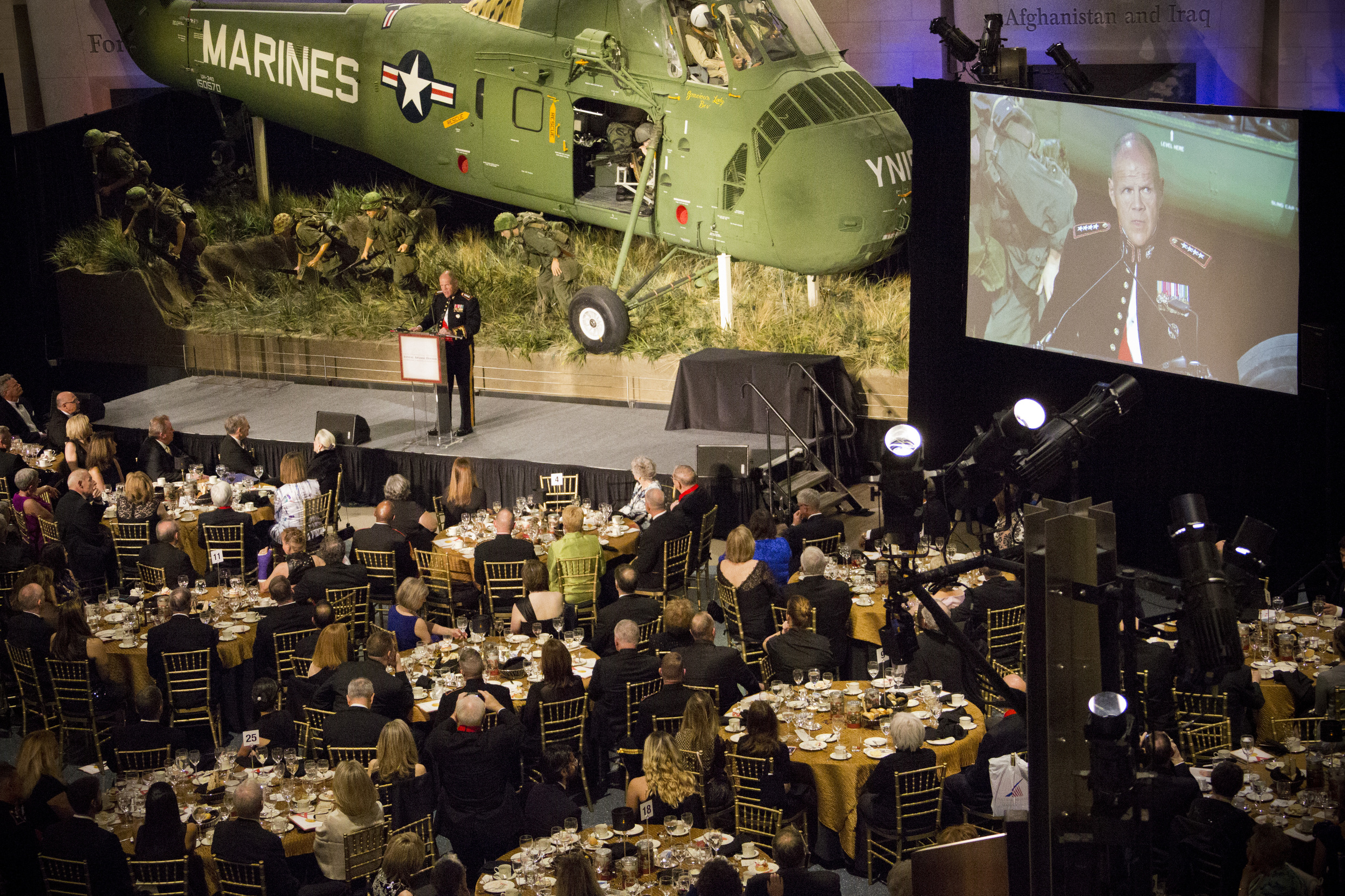
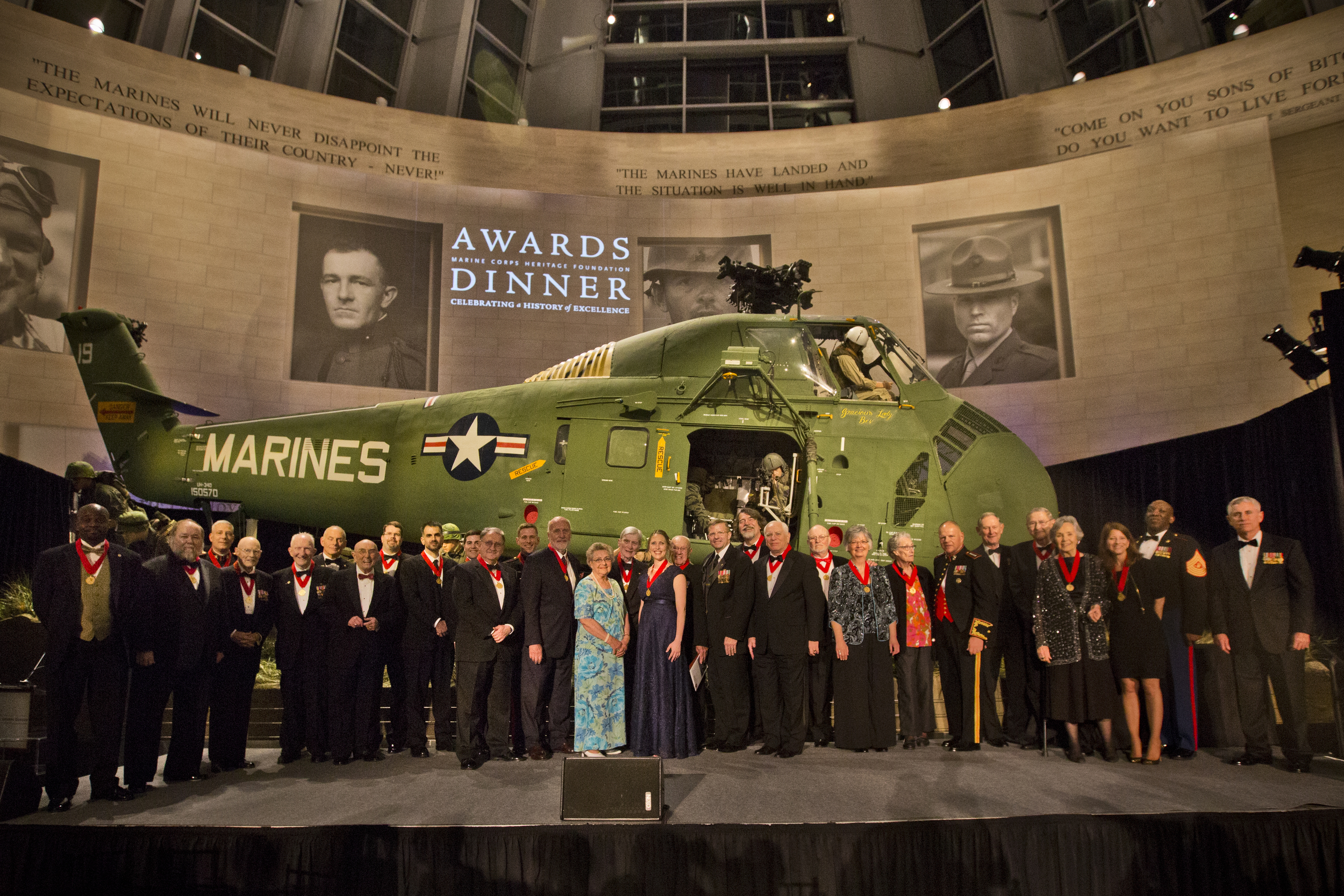
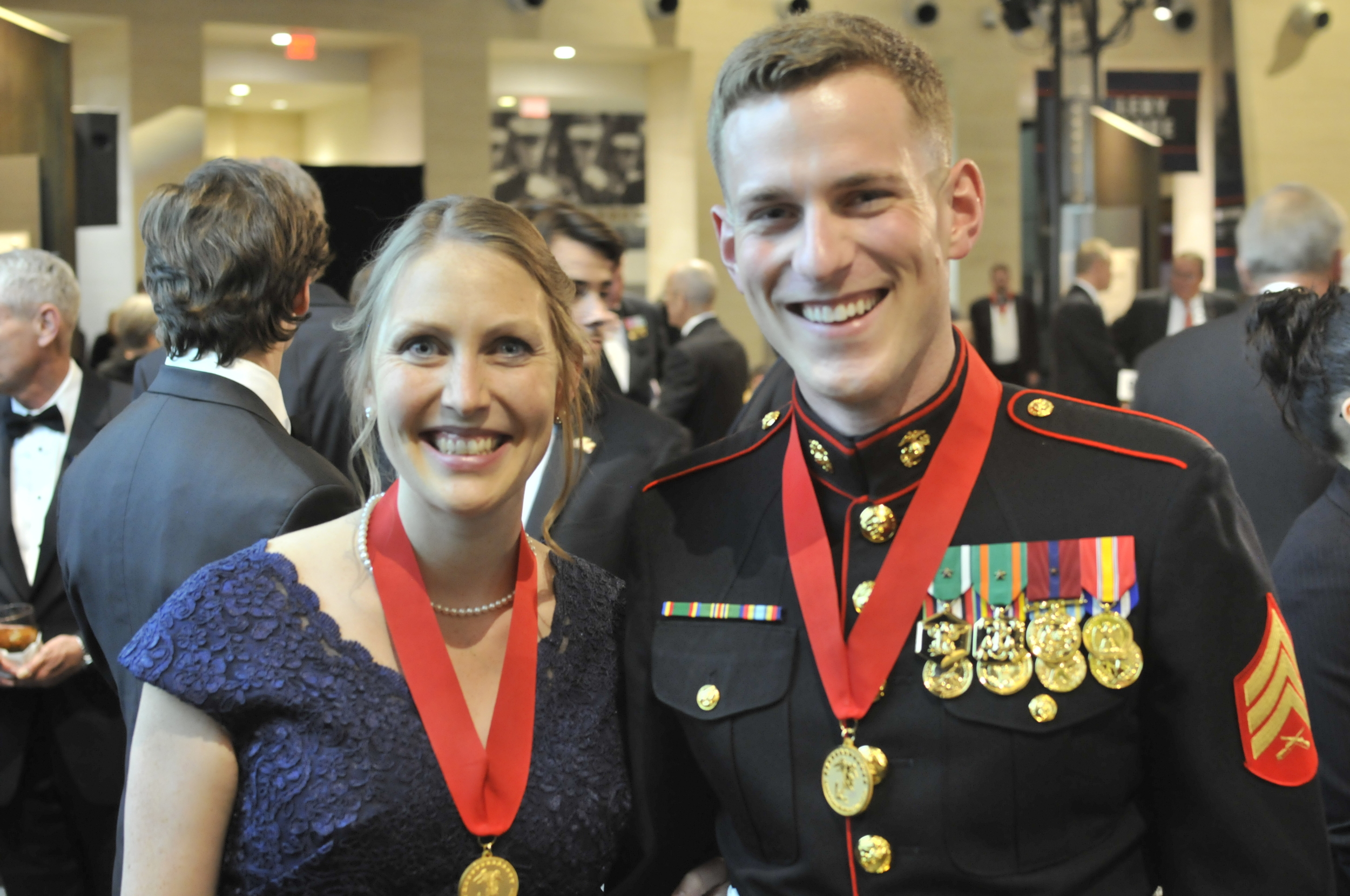
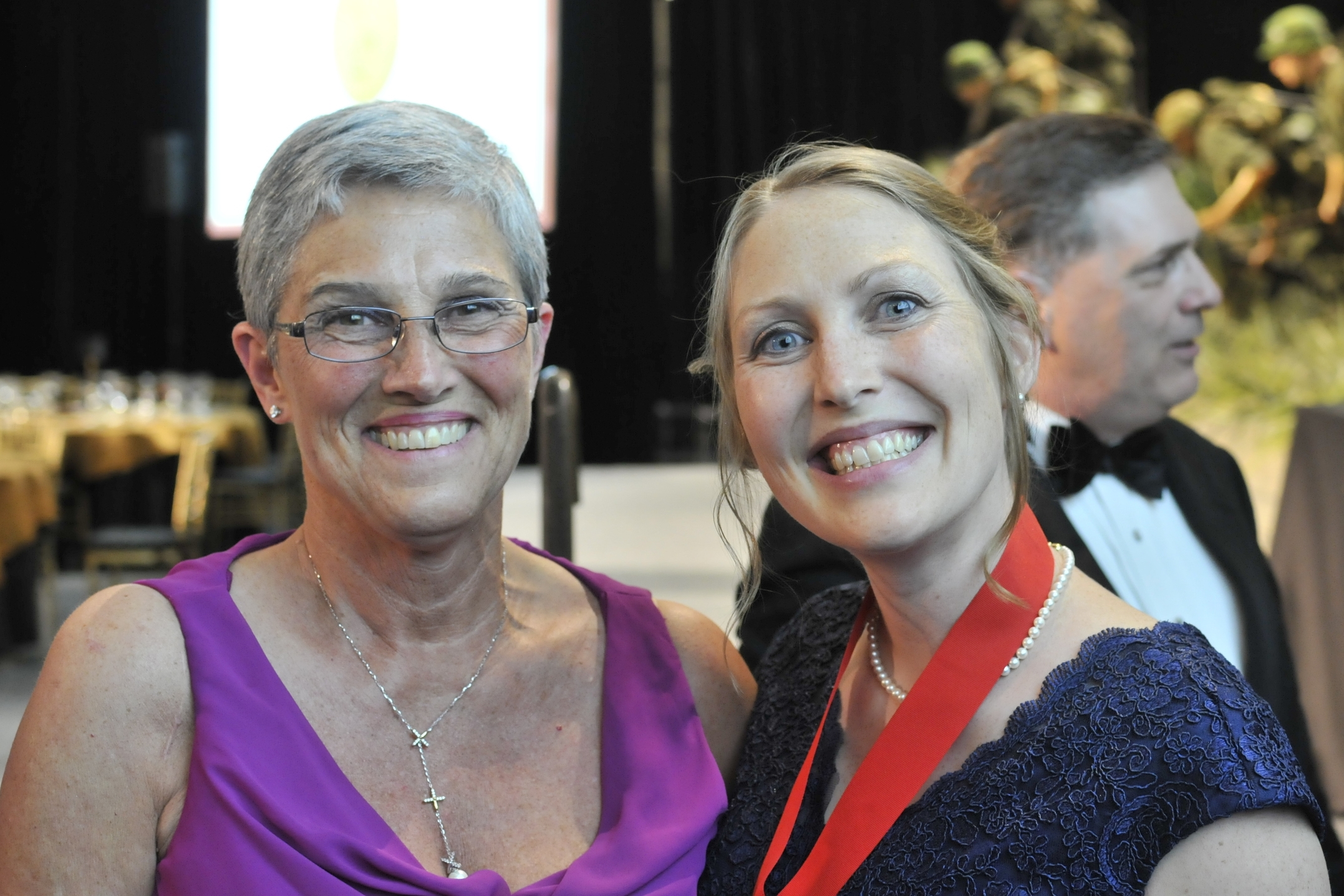
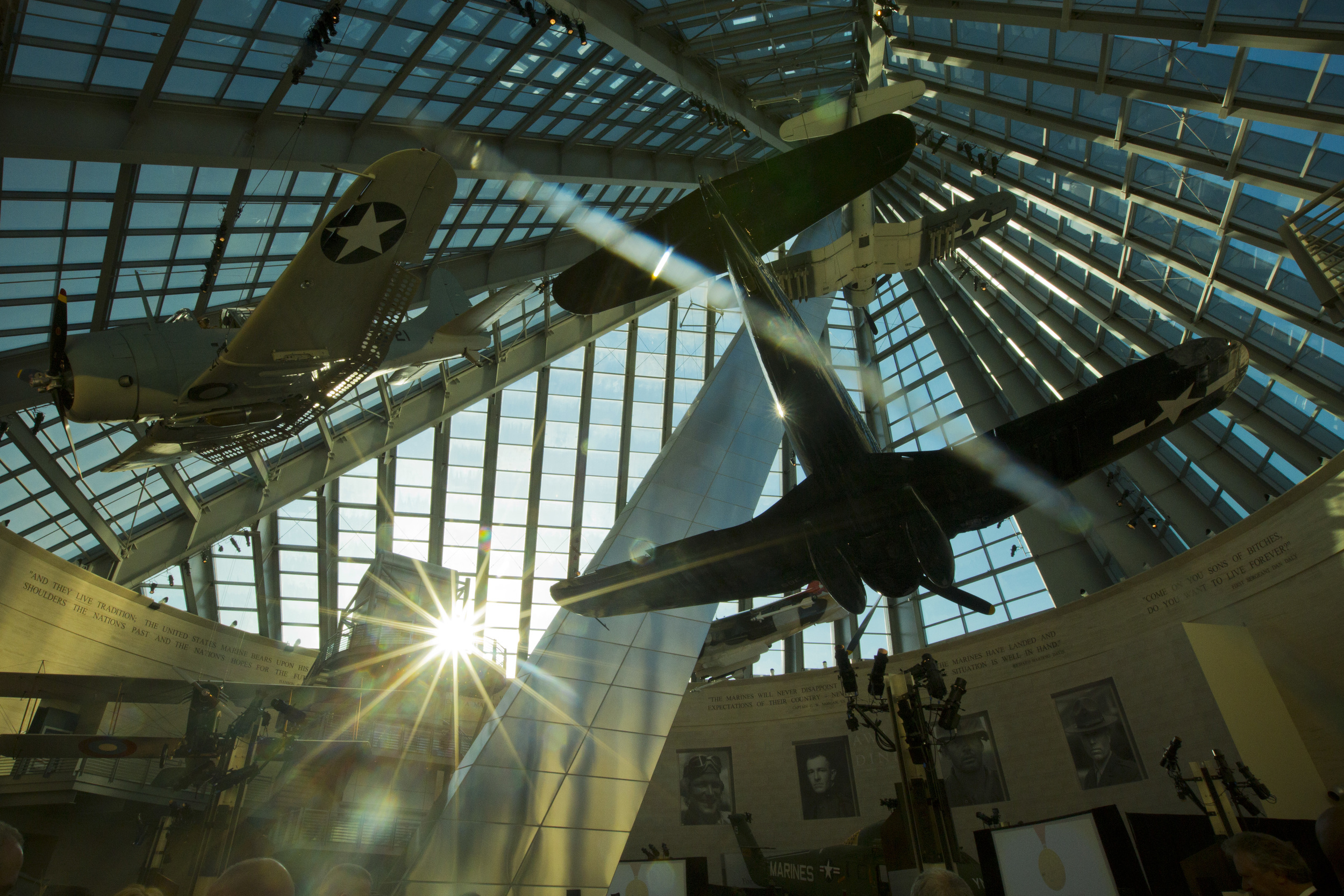
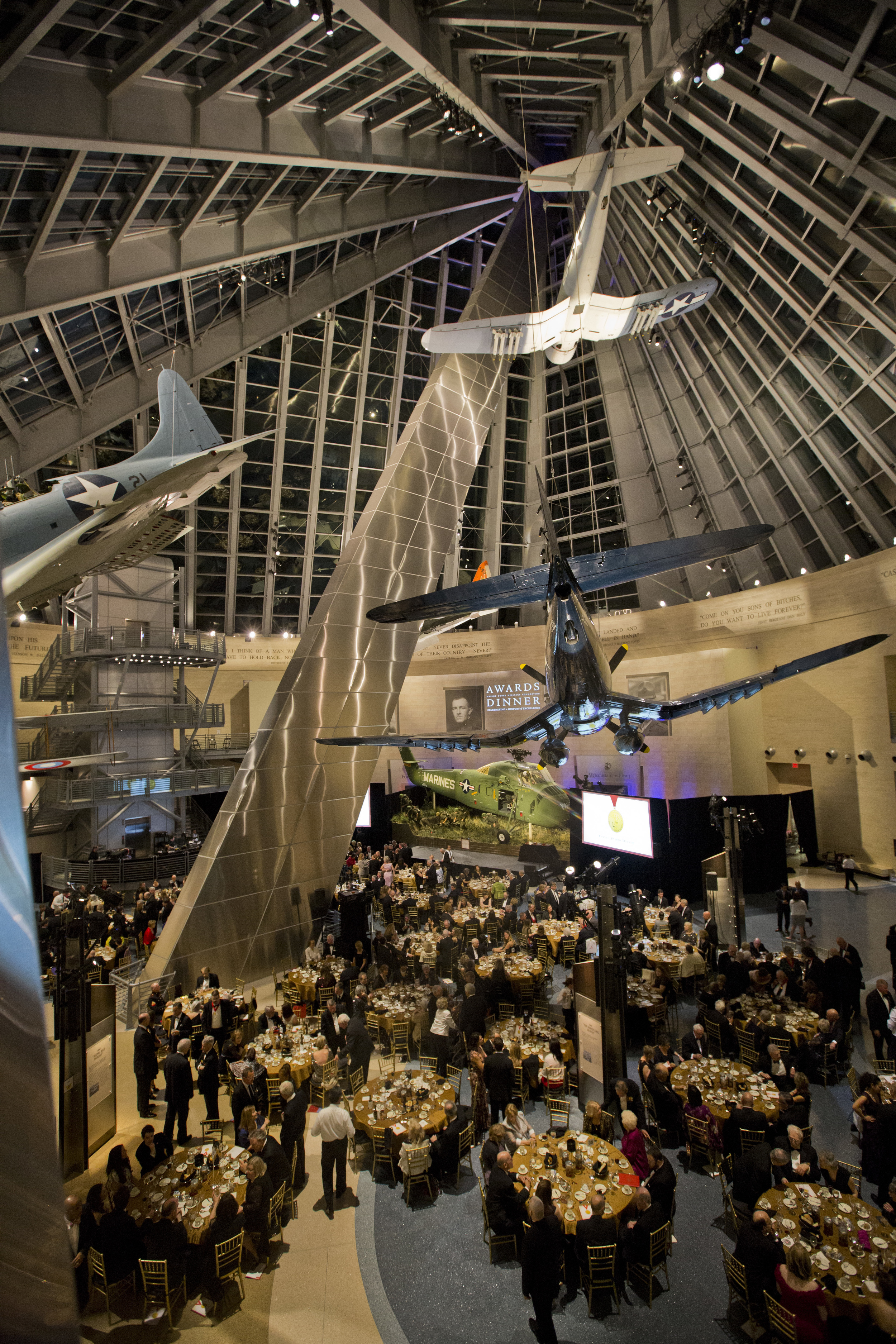
"It is such an honor to be recognized for something that I created," says Rees. "The truth is that this artwork is for the Marines. It's a way of remembering the sacrifices of our fathers and grandfathers who fought in World War II."
The sculpture honors the legacy of America’s first elite fighting force and was commissioned by the U.S. Marine Raider Foundation. Rees spent two years depicting a Browning Automatic Rifleman, a War Dog Handler with his German Shepherd and a Navajo Code Talker. Including its terrain and jungle backdrop, the bronze artwork measures about 4 feet by 3 feet. After completion, it was exhibited to crowds at the Tacoma Art Museum, then the San Diego Air and Space Museum in California.
In December 2014, the sculpture was ceremoniously entrusted for life to the National Museum of the Marine Corps in Triangle, Va. However, recent expansion plans saw the sculpture move to a perhaps more fitting location: the Pentagon. It now resides inside the office of the Commandant of the Marine Corps, Gen. Robert Neller. After her award presentation, Rees had a chance to meet the man who took personal interest in her artwork.
"It was fulfilling to share with the General details about my work,” says Rees."I told him that two of the models that posed were Marine veterans, both having served two tours in Iraq, and the Code Talker model was full-blooded Navajo.”
Rees reflects now on the impact that the sculpture has had on her new friends in the Marine Corps, and looks forward to the next opportunity.
“Figure sculpture truly is a universal language,” she says. “When we experience it, we can identify with it. It touches our souls.”
-Photo credit Staff Sgt Gabriela Garcia
Soul of the Forward & Faithful at the Pentagon
While in Washington D.C. in April, I had the opportunity to meet with Director of the National Museum of the Marine Corps Lin Ezell and learn that my bronze sculpture had been moved out of the museum. 'Soul of the Forward and Faithful,' a bronze sculpture that embodies the legacy of the WWII U.S. Marine Raiders was entrusted to the collection by the U.S. Marine Raider Foundation/Association in November of 2014. The museum has been undergoing a large expansion and spent several months this year closed to the public. Rather than have the sculpture go into storage, director Ezell arranged for the sculpture to be moved to a prominent location in General Robert Neller's office (USMC Headquarters) at the Pentagon. This allows many prominent officials to be inspired by the Raider Legacy through art.
My five-week-old baby, Desiree, traveled with me to Washington DC where I received the Colonel John W. Thomason Jr. Award from the Marine Corps Heritage Foundation on April twenty-third, 2016. She traveled well and got to meet director Lin Ezell, and see the sculptures previous home in the atrium of the Leatherneck Gallery.
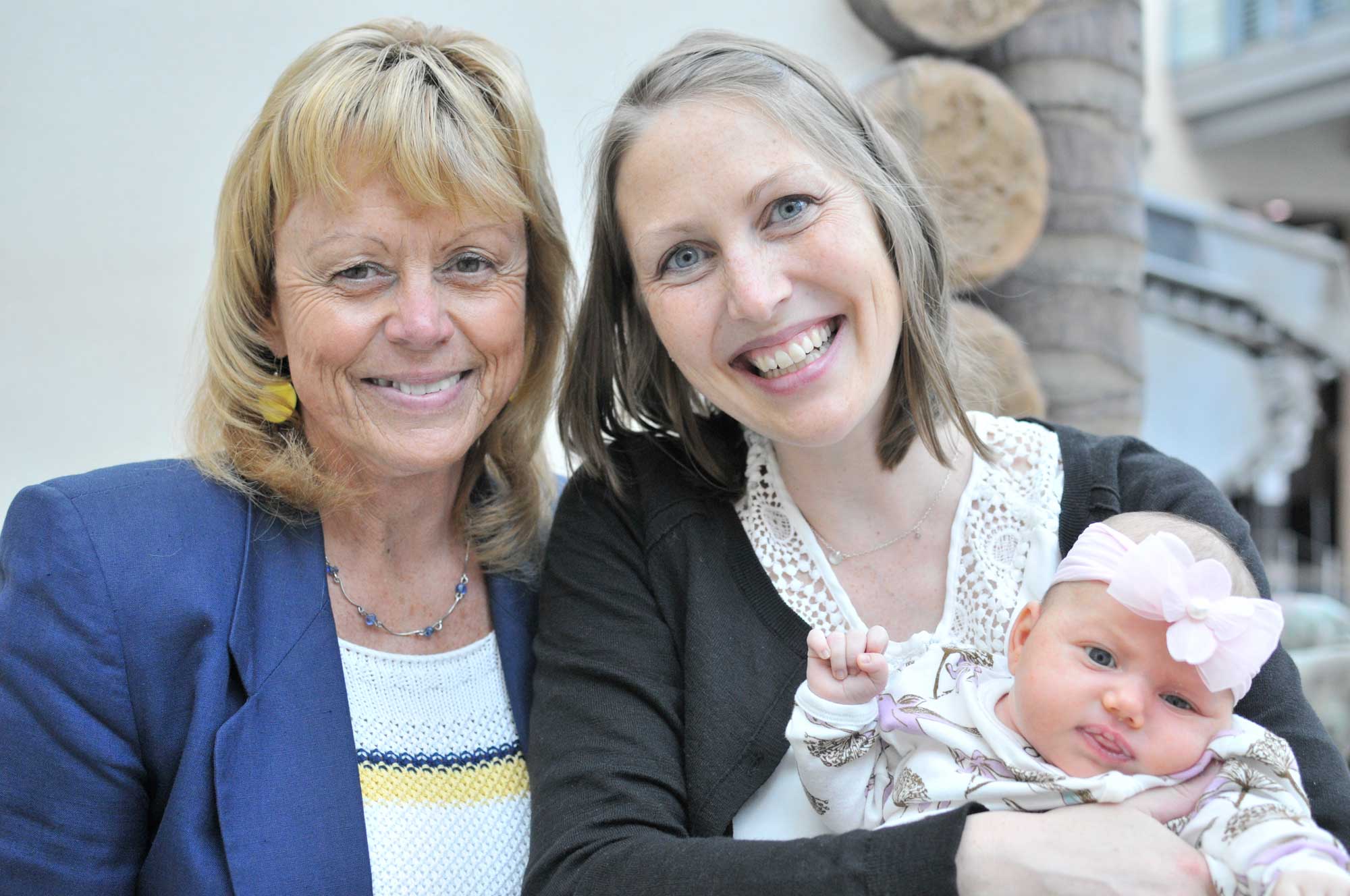
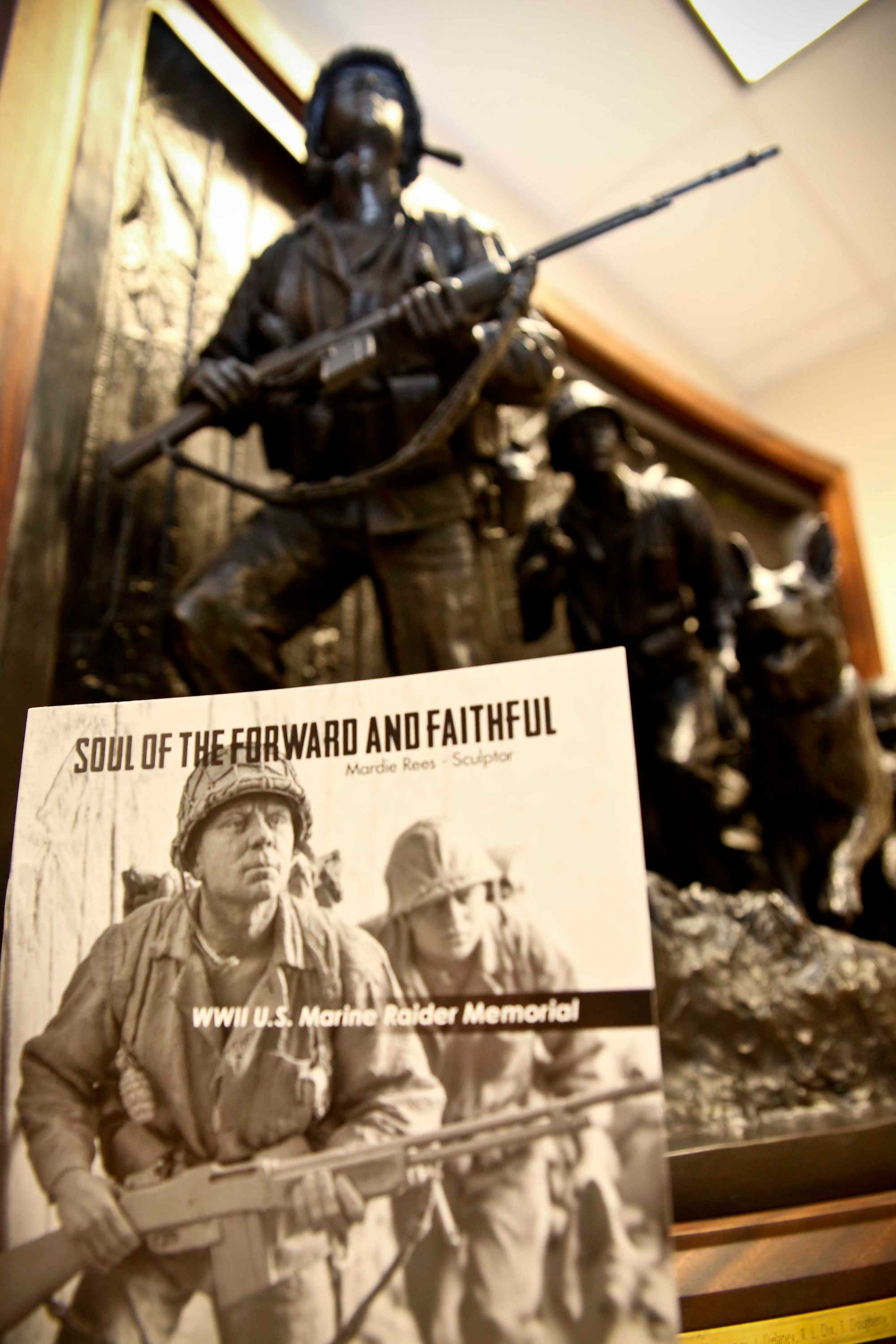
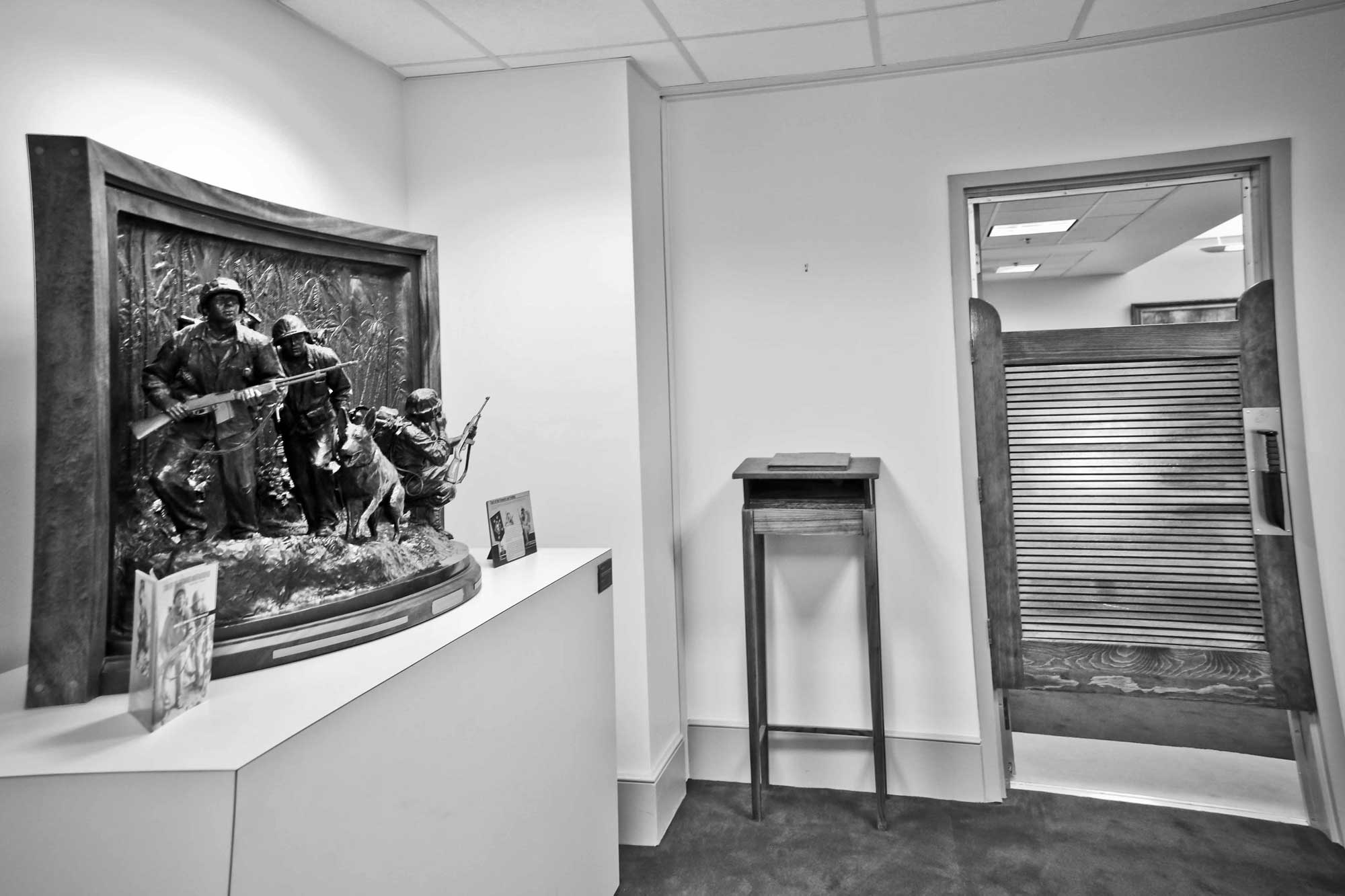
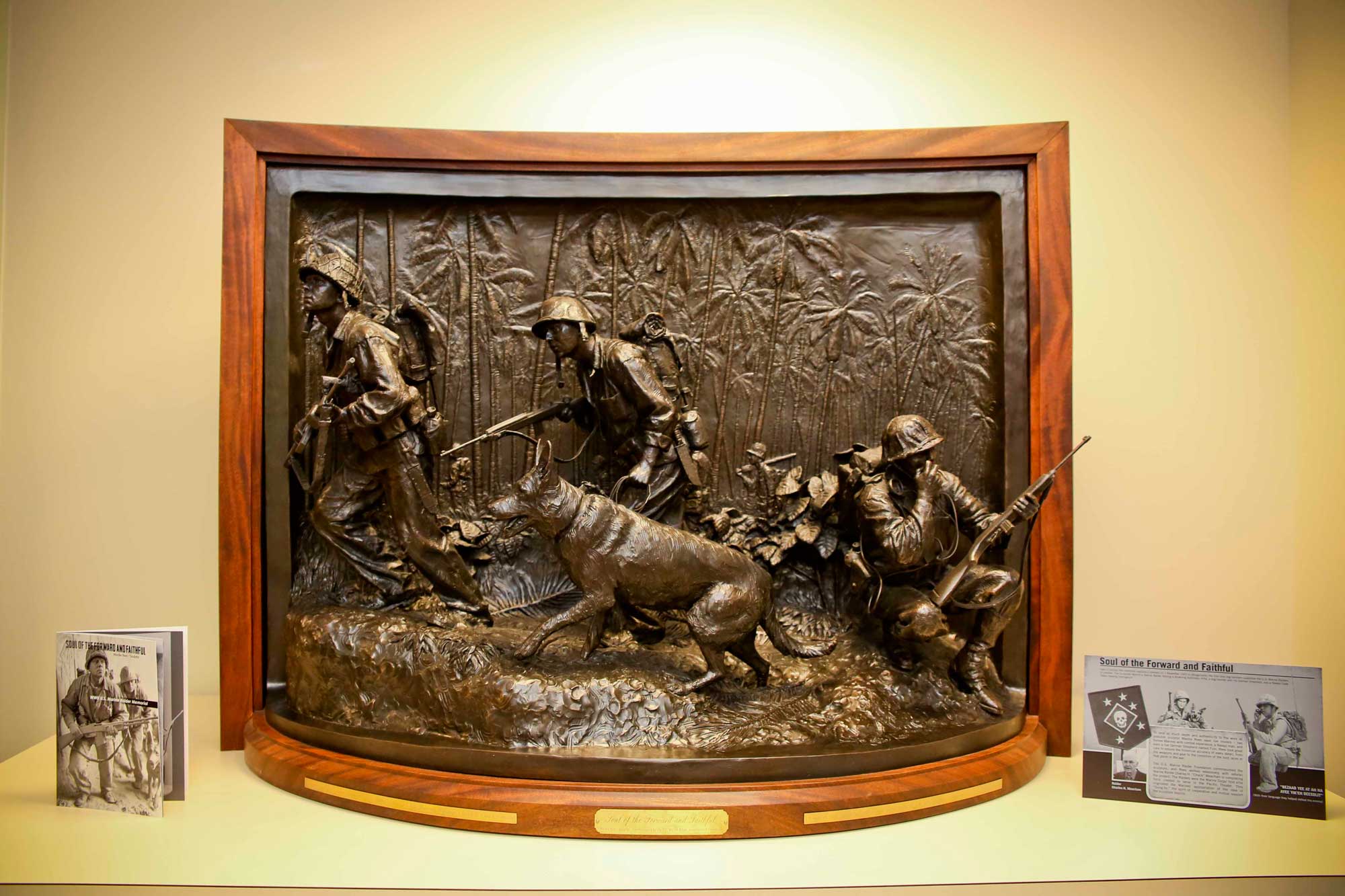
Closing the Books
Been to a ballet or symphony lately? Maybe you caught a movie with some friends or saw your favorite band play downtown. Chances are you were fixated on enjoying the art and were amazed at how they accomplished such a thing. No matter how effortless it seems, there is always a 'behind the scenes' where you find harried staff, exhausted writers, or weary performers. Good bronze sculpture can be no different. Lets dig through the 'to file' pile of reference material for 'Soul of the Forward and Faithful' and take a look at some of the titles that helped the WWII Memorial come to life.
